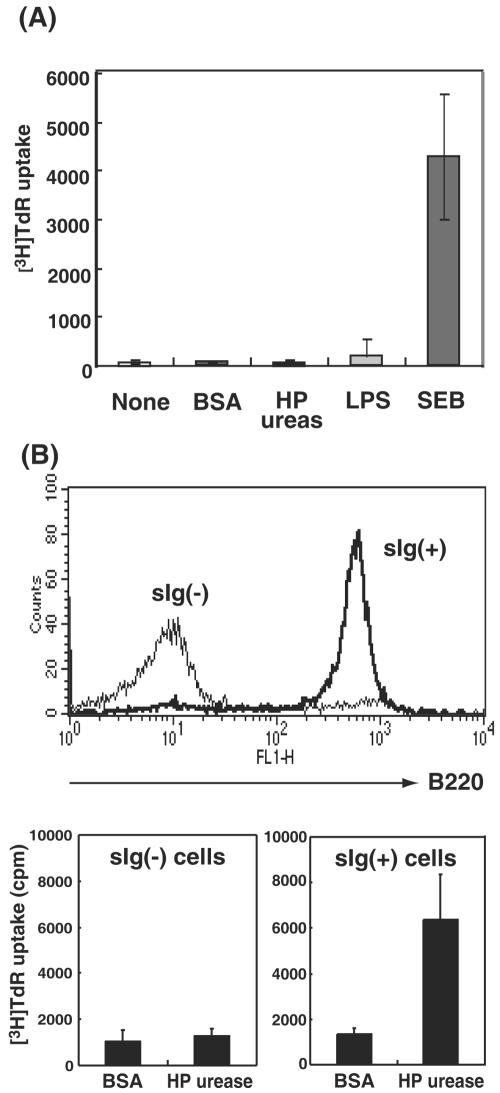FIG. 2.
sIg(+) B cells proliferated on stimulation with purified H. pylori urease. (A) When 106 naive thymocytes were cocultured with 10-μg/ml purified H. pylori urease, 10-μg/ml BSA, or 1-μg/ml E. coli-derived LPS for 3 days, no measurable proliferative responses were observed, although 1-μg/ml staphylococcus enterotoxin B induced a remarkable proliferation of naive thymocytes. (B) To enrich B cells, naive spleen cells were incubated in a plastic dish with the culture medium at 37°C for 1 h, and the nonadherent splenic lymphocytes were further incubated in a dish coated with anti-mouse Ig at 4°C for 30 min. The adherent cells [sIg(+)] and nonadherent cells [sIg(−)] were then harvested, and the B-cell ratio of the adherent cells was confirmed by flow cytometric analysis using a FITC-conjugated rat anti-mouse B220 MAb. The boldface line in the top panel represents the sIg(+) cells, and the thin line represents the sIg(− cells. The bottom panel indicates the proliferative responses of 106 cells when cocultured with 10-μg/ml purified H. pylori urease or 10-μg/ml BSA for 3 days. The purified H. pylori urease showed a good stimulatory capacity against sIg(+) B lymphocytes but not against sIg-negative cells. Data are expressed as the mean counts per minute ± SEM of three independent experiments.

